1. Maize Stem/Shoot Borer - Chilo Partellus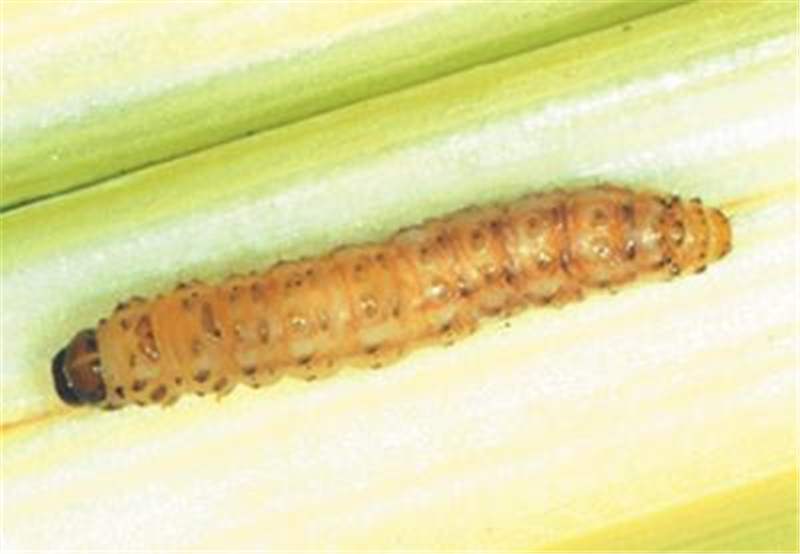
Chilo partellus is a key pest throughout Nepal . These insects are yellowish brown with straw coloured wings with marks, hairy hindwings. The larvae are yellowish brown with a brown head.
In maize, larvae bore holes visible on the stem near the nodes. They cause causing typical “shot hole” symptom. In severe cases, dead hearts are formed and such plants do not bear the ears.
MANAGEMENT:
- Release of Trichogramma chilonis at rate of around 1 lakh per hectare
- Inter-cropping with legume reduces borer
- Clip the lower leaves of maize upto the 4th
- Use of safe chemical pesticides/ Seed and At-Planting Insecticide Treatments:
- use carbofuran 3G at or before sowing @33 kg per hectare
- Fenvalerate 20EC @375ml/ha, Cypermethrin 10EC @650ml/ha in250-500 litres of water as foliar spray
- 15 kg granular pesticide of fipronil
2. Corn Leaf Aphid - Rhopalosiphum maydis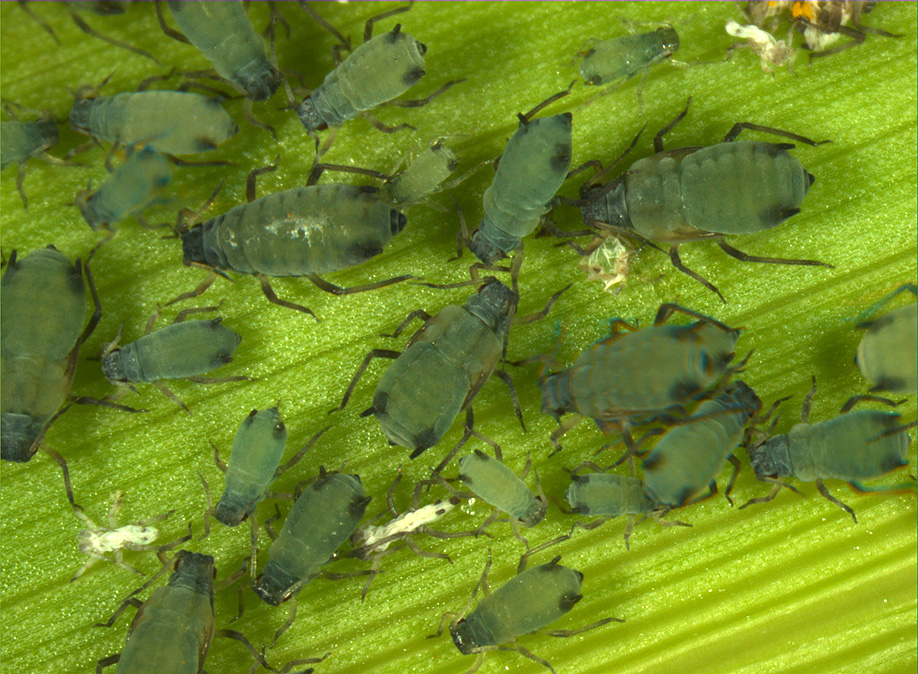
Maize, also reported to occur on sorghum, wheat, and barley. Yellow, green in color with nymphs are wingless adults with smaller size. Corn leaf aphid acts as a vector of Maize dwarf mosaic virus (MDMV). It causes leaf mottling and discoloration; reddening of corn leaves exacerbated under drought stress. The aphid also produce a sticky honeydew.
MANAGEMENT:
- Use Aphilines wasp as parasitoid
- Avoid buying infested seedlings for the nursery
- Use of mineral oil @15ml/l
- Treatment of roots with Malathion, tobacco
- use carbofuran 3G at or before sowing @15gm per plant
3. Army worm - Mythimna separate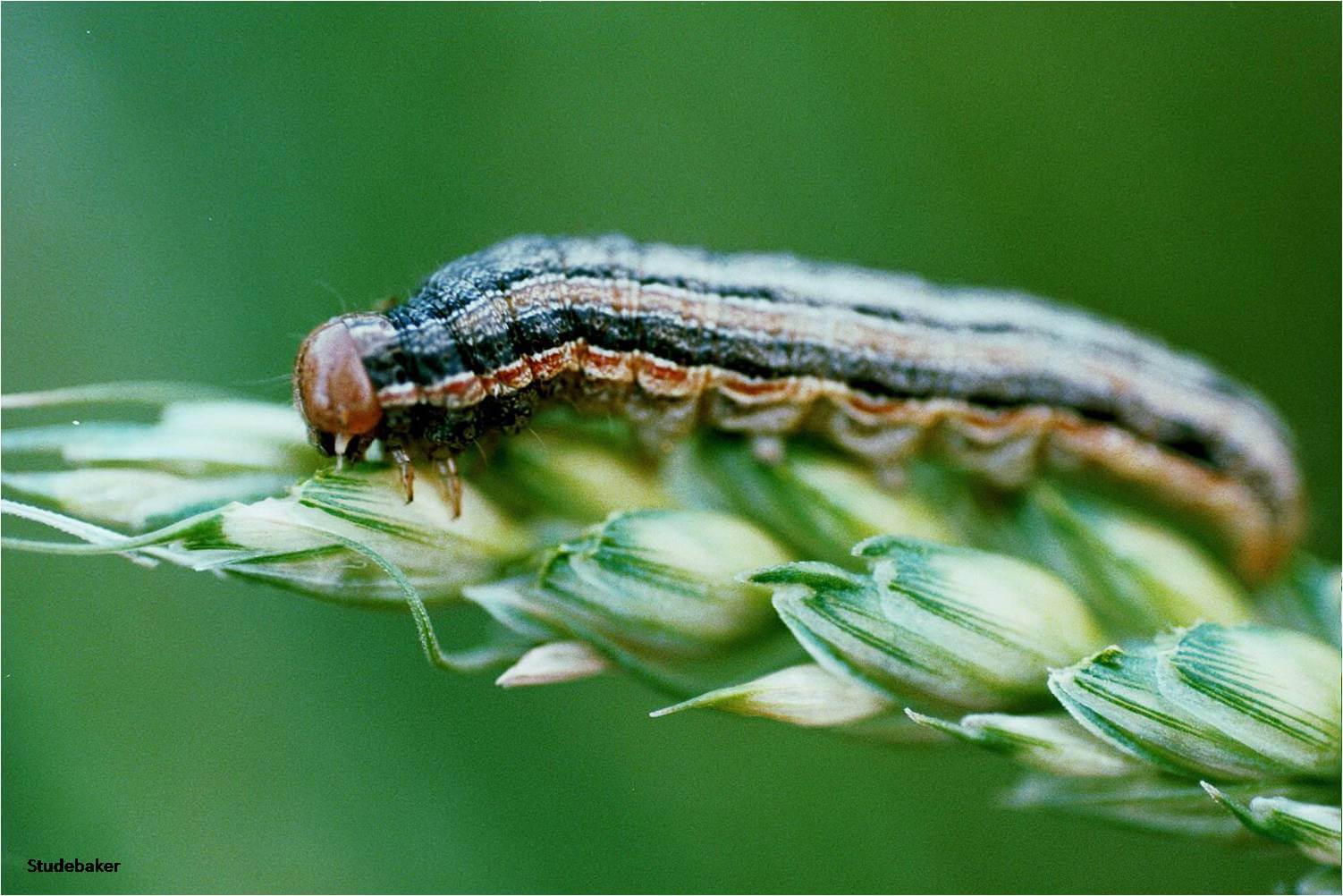
Armyworms are occasionally a problem in corn, especially in weedy fields, in fields near severely infested small grain, and in no-tillage corn. The adults are pale brown while larvae are voracious, dull-white, green. It causes naked(skeletonized), cut crops. Maximum infestation occurs at rise of springand also damages inflorescence, ear, grains.
MANAGEMENT:
- Removal and destruction of weeds
- Manual operations: handpicking of large caterpillars, beetles and egg masses and use of sweep nets, wire gauges etc.
- flooding irrigation
- Use of safe chemical pesticides/ Seed and At-Planting Insecticide Treatments:
- form pit around field and sprinkle Malathion 5% ; Chloropyriphos 1.5%
- spray 500 ml dichlorovous 85SL o3 kg of carbaryl 50 WP or 1 lit of Quinalphos 25 EC in 500 lit water per ha.
4. Maize Stem Fly - Atherigona orientalis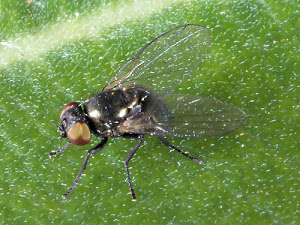
These are small grey coloured fly. The larvae are small, pale yellow tappering towards head. It affects the maize plants at the seedling stage and leads to drying of the seedlings or ‘dead heart’.
MANAGEMENT:
- Seed treatment with imidacloprid 70 WS 10 g/kg of seeds
- Use of safe chemical pesticides/ Seed and At-Planting Insecticide Treatments:
- Carbofuran 3%CG 33.3 kg/ha
- Dimethoate 30%EC 1155 ml/ha
- Phorate 10%CG 10 kg/ha
5. Wireworms- Agriotes Spp. 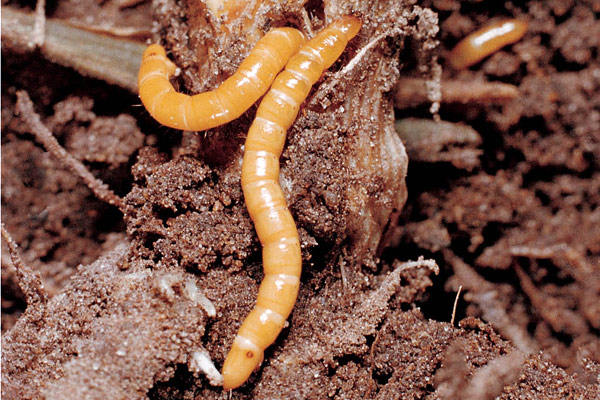
Wireworms look wiry with conspicuous segments. The adult click beetles have two characteristic rear-facing pointed corners of pronotum. The pests reduce germination rate by feeding on germinating seed , damaging or eliminating a potential plant. Wireworms may also injure corn by feeding on soft stem and root tissues underground.
MANAGEMENT:
- Crop rotation including alfa-alfa and high glucosinolate or use of Brassica spp.
- Use of trap crops: trap crops used for maize could include wheat.
- Use of biopesticides: Release of Trichogramma chilonis at rate of around 1 lakh per hectare and use of fungi like Metarrhizium, Beauveria.
- Destruction of pest harbouring places.
